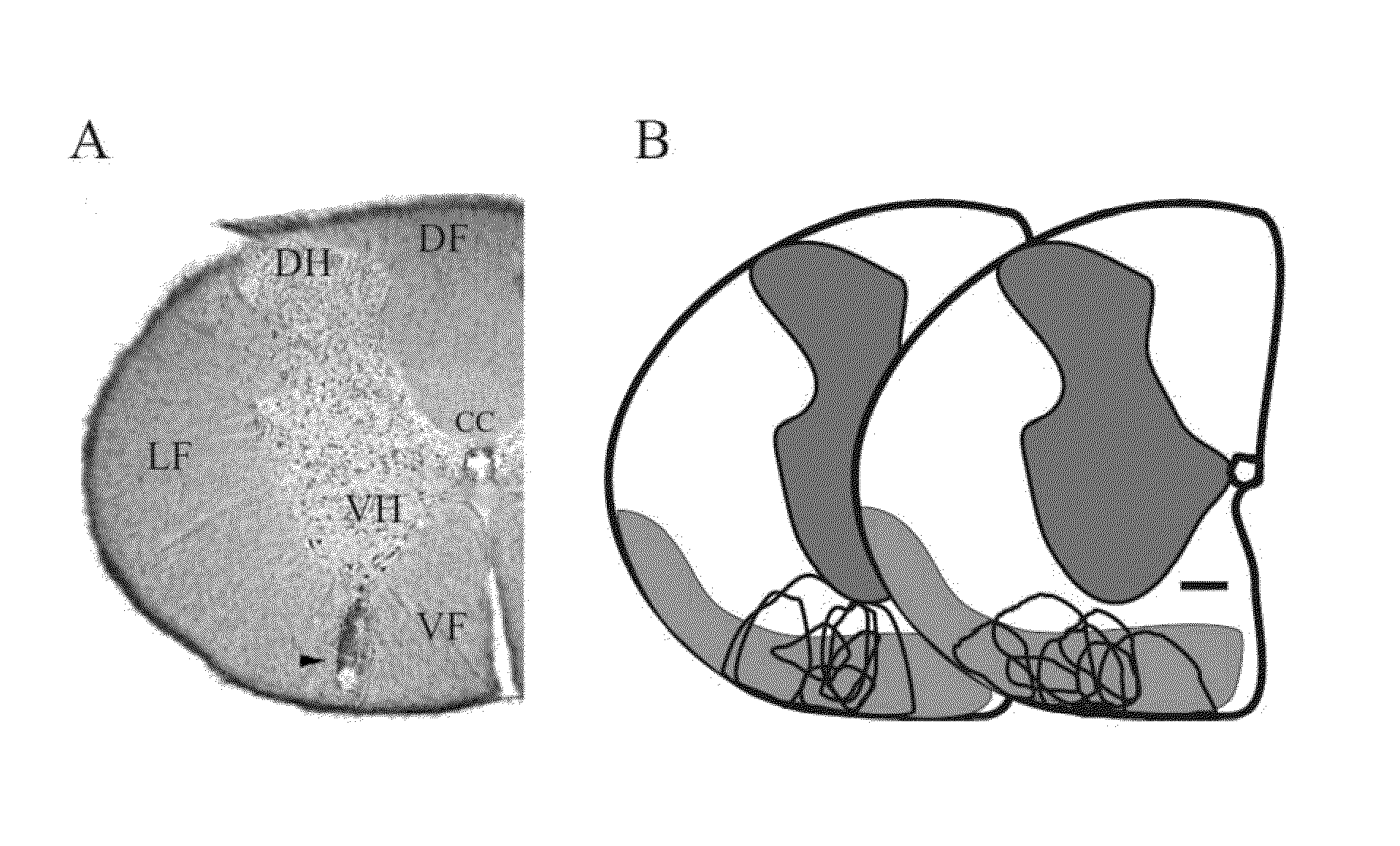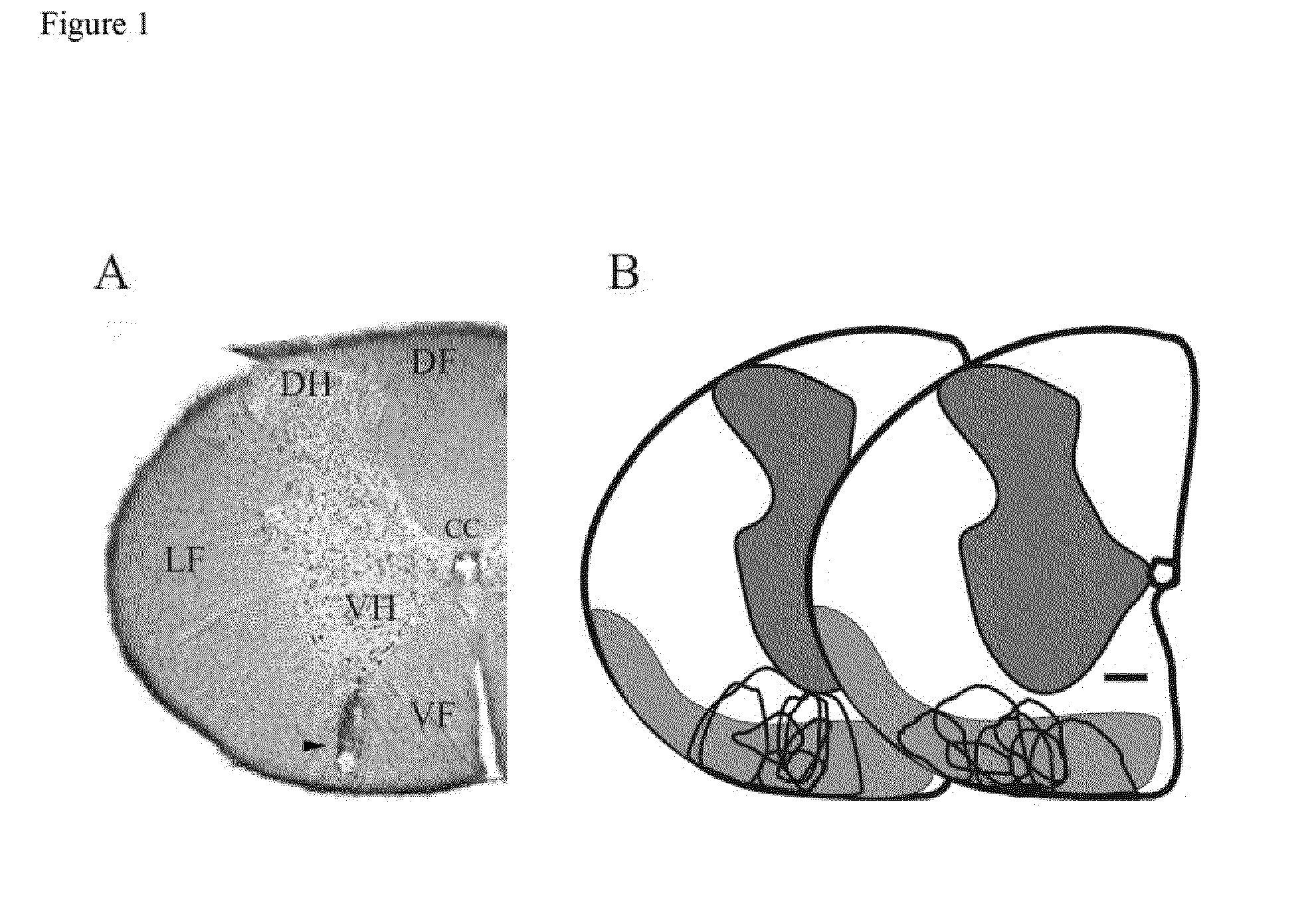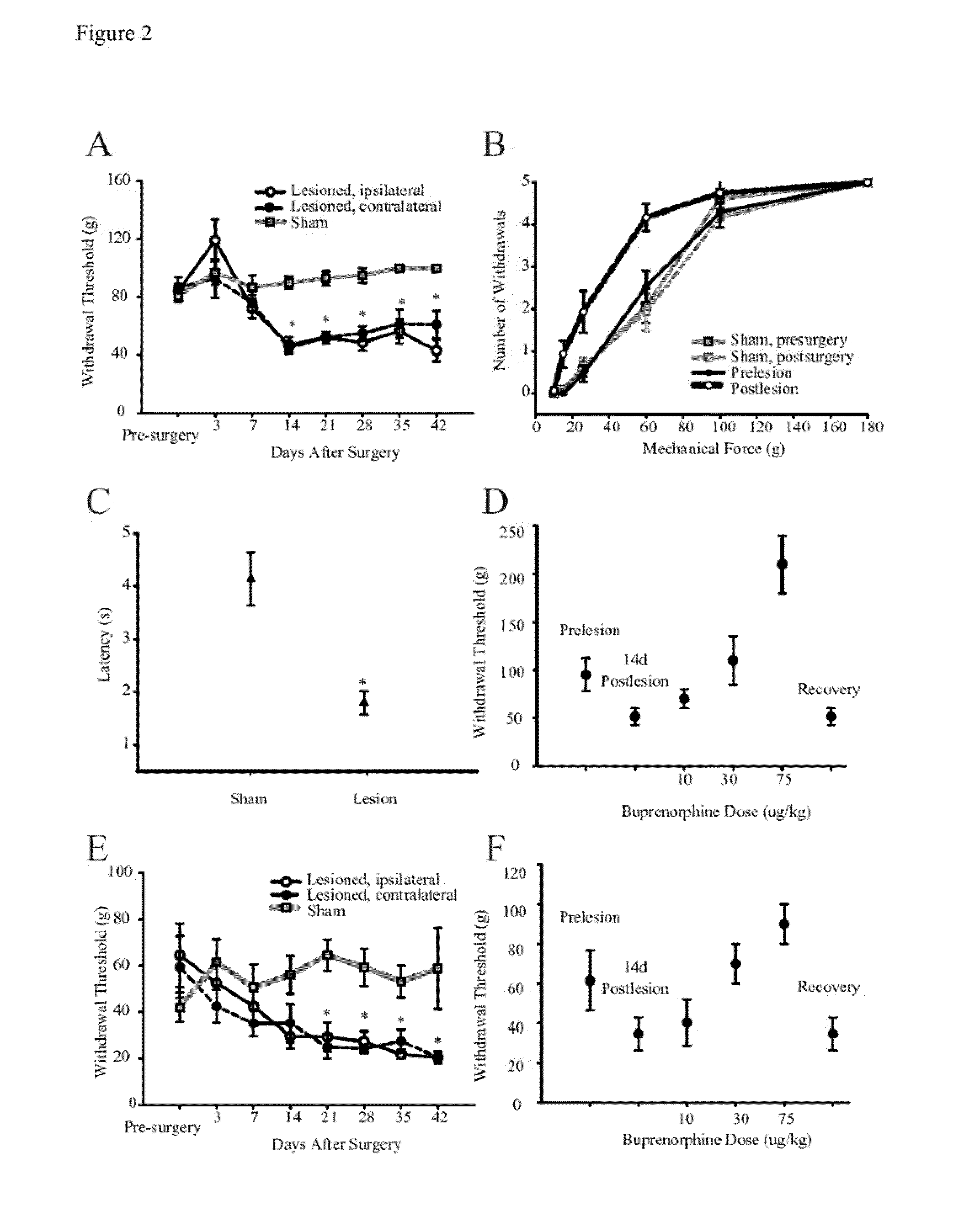Methods for Treating Central Pain Syndrome and Other Pain Related Pathologies
a technology for treating central pain syndrome and other pain related pathologies, applied in electrotherapy, therapy, etc., can solve problems such as resistance to conventional pharmacological treatmen
- Summary
- Abstract
- Description
- Claims
- Application Information
AI Technical Summary
Problems solved by technology
Method used
Image
Examples
example 1
Animal Model of Central Pain Syndrome
[0042]The inventors and others have previously shown that CPS develops in rats following lesions of the spinal cord (Siddall et al., 1995; Mills et al., 2001; Endo et al., 2008; Wang and Thompson, 2008b). Because the spinothalamocortical system is affected in all central pain patients, the inventors experimentally produced lesions that included the spinothalamic tract (STT). Rats (n=18) received a single, unilateral electrolytic lesion in the anterolateral quadrant of the spinal cord, at lower cervical to upper thoracic levels (FIG. 1A). In rats, STT afferents to medial and lateral thalamic nuclei travel in the ventral and ventrolateral funiculi of the spinal cord (Giesler et al., 1981). The inventors therefore targeted lesions to these spinal cord regions (FIG. 1B).
[0043]In spinal-lesioned animals—and in contrast to animals receiving sham surgery—hindpaw withdrawal thresholds to mechanical stimulation of the dorsal paw surface transiently increa...
example 2
Suppressed Neuronal Activity in the ZI
[0049]The zona incerta (ZI) is aptly named: the function of this “zone of uncertainty”, situated ventral to the thalamus, has been debated since Auguste Forel first described it in 1877 (Forel, 1877). ZI receives dense nociceptive inputs through the STT (Shammah-Lagnado et al., 1985; Craig, 2004), and has been implicated in a variety of functions (Yen et al., 1989; Pono et al., 2003). A striking feature of the ZI is its target specificity (Bartho et al, 2002; Mitrofanis, 2005). In all sensory systems it provides inhibitory inputs exclusively to “higher order” thalamic nuclei (e.g., posterior nucleus in the somatosensory system and the inferior pulvinar in the visual system). ZI afferents avoid first-order thalamic nuclei (e.g., ventroposterior in the somatosensory system and the lateral geniculate in the visual system).
[0050]ZI sends a dense GABAergic projection upon the posterior nucleus of the thalamus (PO) (Power et al., 1999; Bartho et al., ...
example 3
ZI Stimulation Reduces Hyperalgesia
[0052]To determine if suppressed activity in the ZI is causally responsible for mechanical hyperalgesia in animals with CPS, the inventors stimulated the ZI using chronically implanted stimulation electrodes. FIG. 3D details the effect of electrical stimulation on mechanical withdrawal thresholds (n=6 rats). When the inventors applied mechanical stimuli while stimulating the ZI, withdrawal thresholds were significantly increased, and typically returned to pre-lesion levels. ZI stimulation reversed mechanical hyperalgesia in one or both of the hindpaws (range: 0-80% increase in threshold of hindpaw ipsilateral to the lesion, 25-93% increase contralaterally; p<0.05, MWU; FIG. 3D).
PUM
 Login to View More
Login to View More Abstract
Description
Claims
Application Information
 Login to View More
Login to View More - R&D
- Intellectual Property
- Life Sciences
- Materials
- Tech Scout
- Unparalleled Data Quality
- Higher Quality Content
- 60% Fewer Hallucinations
Browse by: Latest US Patents, China's latest patents, Technical Efficacy Thesaurus, Application Domain, Technology Topic, Popular Technical Reports.
© 2025 PatSnap. All rights reserved.Legal|Privacy policy|Modern Slavery Act Transparency Statement|Sitemap|About US| Contact US: help@patsnap.com



